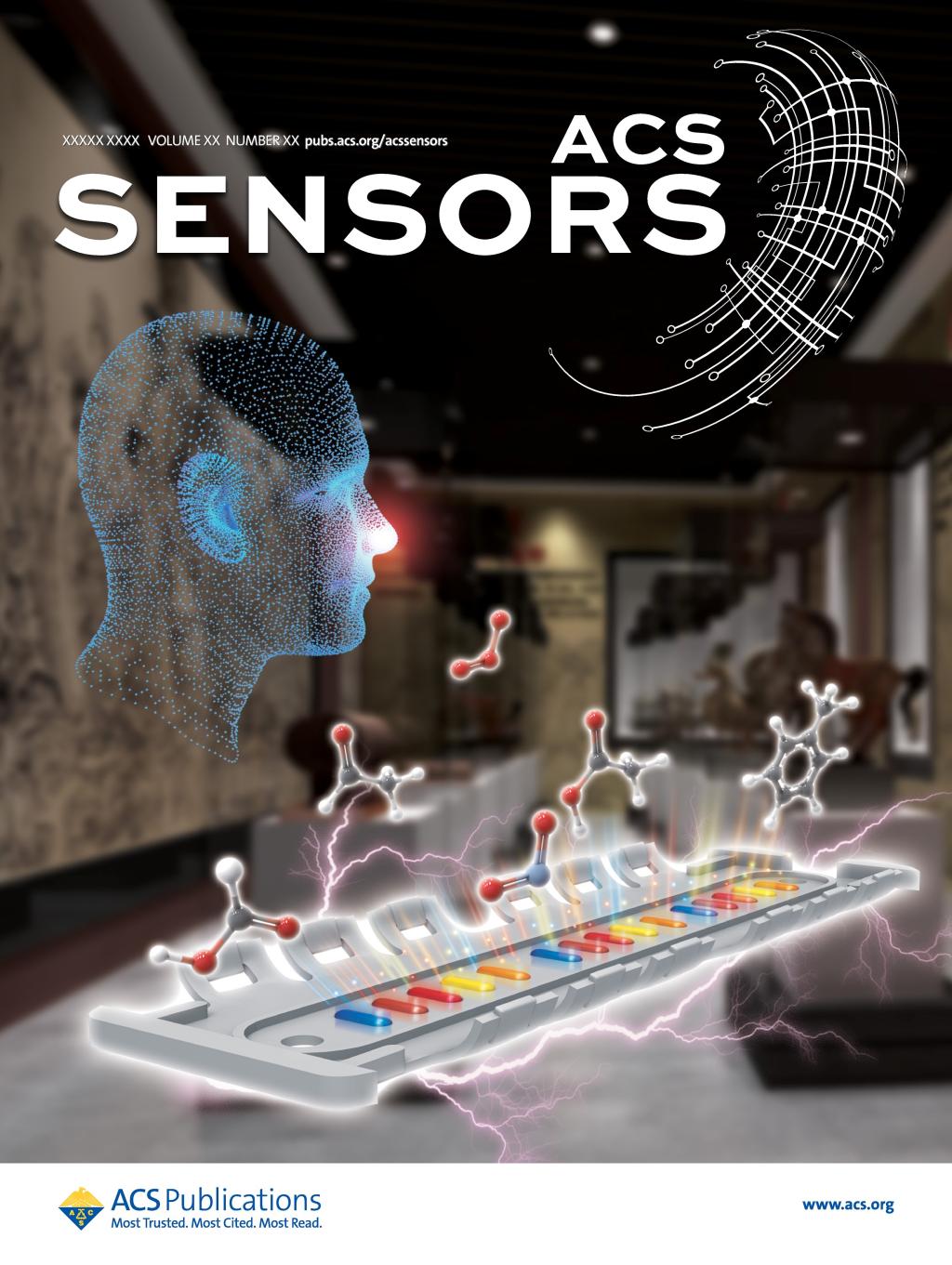Recently, Prof Zheng Li from IAS of Shenzhen University published a research article titled “Ultrasensitive Monitoring of Museum Airborne Pollutants using a Silver Nanoparticle Sensor Array” in ACS Sensors (2020 latest IF=7.33, CAS tier 1 journal in both categories of General Chemistry and Analytical Chemistry), regarding the trace level detection of airborne pollutants in museums. The article is selected as the Supplementary Cover of the current issue. Dr. Zheng Li is listed as the first and corresponding author of the article. Emeritus Professor Kenneth Suslick from University of Illinois at Urbana-Champaign is the joint corresponding author.
Volatile airborne pollutants are commonly present in the daily life, which causes damages to not only human beings but also inanimate materials, such as artworks from museums. Due to the lack of self-healing mechanism of living systems, the permissible exposure limits of cultural heritage materials are usually 2-4 orders of magnitude lower than those of humans. Therefore, it is significant to develop in-situ detection technique for ppb-level airborne pollutants. Traditional chromatographic or spectroscopic methods cannot perform real-time analysis of indoor air quality on a large scale. Zheng discovered through experiment that a thin film array of Ag nanoparticles (10 nm in diameter) capped with different ligands display distinctive and highly sensitive optical response to a wide range of reactive gases, which originates from changes in the properties of local surface plasmon resonance (LSPR). Based on this transduction mechanism, the article developed a 15-element sensor array as an “optoelectronic nose” to explore their kinetic responses to different concentrations and types of air pollutants, and preliminarily demonstrate the capability of the array for the discrimination of different printing papers according to their specific response patterns. Due to the advantages of small size, low cost, and ease of deployment, this type of sensor devices shows great potential to be applied to the long-term monitoring of previous cultural heritage objects in the museum microenvironment.

In addition, Dr. Zheng Li was lately invited to publish a minireview paper in Nanoscale Advances (sister journal of Nanoscale, IF pending) regarding the nanodiagnostic tools for plant disease diagnosis, titled “Agricultural Nanodiagnostics for Plant Diseases: Recent Advances and Challenges”. The paper reviewed several types of thriving nanodiagnostic tools used in agriculture in the recent five years, including microarray needle patch (simple and minimally invasive), nanopore sequencing (accurate but expensive), nanosensors or nanobiosensors (noninvasive but with unknown toxicity), wearable nanoelectronics (real-time data collection but subject to environmental disturbance). The paper analyzed the pros and cons of above methods, and cited recent progresses of his overseas group in this field (Li, Z. et al. Nat. Plants 2019, 5, 856-866; Paul, R. et al. ACS Nano 2019, 13, 6540-6549). Dr. Zheng Li is listed as the first author; Dr. Qingshan Wei from the Department of Chemical and Biomolecular Engineering at North Carolina State University is the corresponding author.

Both publications list Shenzhen University as the primary institute of completion. The research was supported by Guangdong Joint Fund of Fundamental and Applied Research and Guangdong University Young Talents Project.
Links to the papers:
https://pubs.acs.org/doi/10.1021/acssensors.0c00583
https://pubs.rsc.org/en/content/articlelanding/2020/na/c9na00724e#!divAbstract


